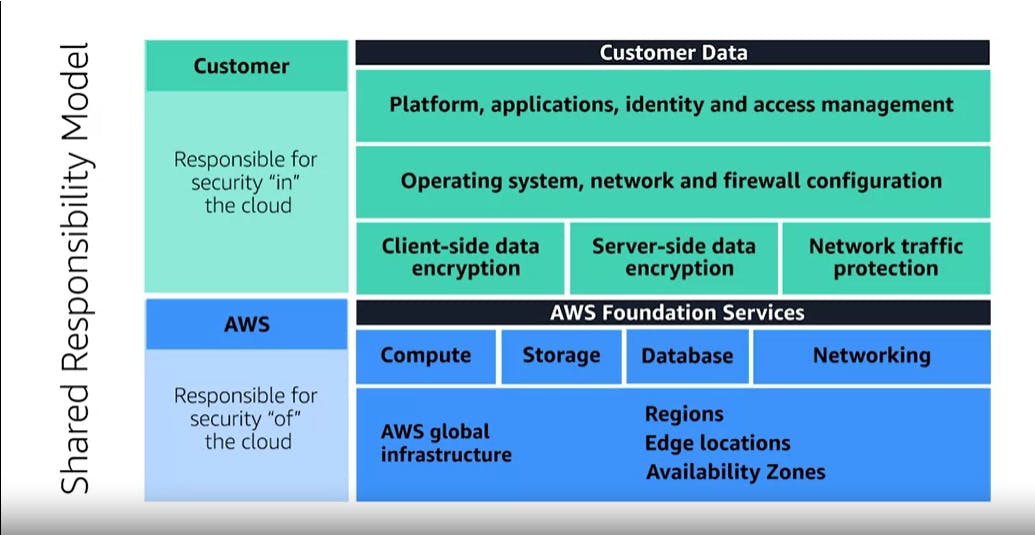What is the AWS Shared Responsibility Model?
3 min read

The cloud offers a scalable and cost-effective way to manage your IT infrastructure. But with great power comes great responsibility, especially when it comes to security. The AWS Shared Responsibility Model is an important concept that defines how security is handled in the AWS cloud environment.
AWS Shared Responsibility Model

At its core, the AWS Shared Responsibility Model defines the division of responsibilities between AWS, as the cloud service provider, and the customer, who utilizes AWS services. This model is instrumental in understanding who is accountable for securing what aspects of the cloud infrastructure.
In essence, AWS is responsible for the security of the cloud, which includes the infrastructure, such as the hardware, software, networking, and facilities that run AWS Cloud services. On the other hand, the customer is responsible for the security in the cloud, covering aspects such as data, applications, identity and access management, network configurations, and compliance adherence.
AWS's Responsibilities (Security OF the Cloud)
Infrastructure Security: AWS manages and secures the infrastructure that runs all of the AWS services. This includes the physical security of data centres, hardware maintenance, and virtualization infrastructure.
Hardware Security: AWS ensures the security and integrity of the hardware used to run its services, including servers, networking equipment, and storage devices.
Global Compliance Programs: AWS complies with numerous global security standards and regulations, such as SOC 1, SOC 2, ISO 27001, HIPAA, and GDPR, to provide assurance to customers regarding the security of their data.
DDoS Protection: AWS offers robust DDoS (Distributed Denial of Service) protection to mitigate and prevent attacks on customer applications and infrastructure.
Managed Services: AWS provides various managed services, such as Amazon RDS (Relational Database Service) and Amazon S3 (Simple Storage Service), with built-in security features, reducing the burden on customers to manage these aspects themselves.
Customer Responsibilities (Security IN the Cloud)
Data Protection: Customers are responsible for encrypting their data, both in transit and at rest, using appropriate encryption methods. They must also define access controls and manage encryption keys.
Identity and Access Management (IAM): Customers are responsible for managing user access to AWS resources using IAM. This includes creating and managing IAM users, groups, roles, and policies to ensure least privilege access.
Network Security: Customers must configure network security groups, firewall rules, and other network controls to protect their AWS resources from unauthorized access.
Application Security: Customers are responsible for securing their applications running on AWS, including patching and updating software, implementing secure coding practices, and monitoring for security vulnerabilities.
Compliance: While AWS provides a secure and compliant infrastructure, customers are responsible for ensuring that their applications and data meet industry-specific compliance requirements.
Conclusion
By understanding and implementing the AWS Shared Responsibility Model, you can leverage the cloud's security benefits while maintaining control over your data and applications. Remember, security is an ongoing process. Stay informed about the latest security threats and best practices to ensure a safe and secure cloud journey.
